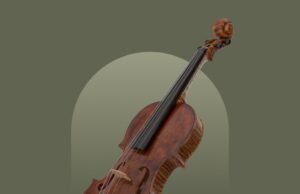John Dilworth
JAY (JAYE), Henry (I) Worked circa. 1585-1667 Southwark, London UK. Both spellings of the name found on labels and in texts. Important early English viol maker. Singled out by Mace in his Musick’s Monument (1676) as one of the best of his time when English viols were particularly prized throughout Europe. Made a Freeman of the Fletcher’s company in 1606, to which Richard Meares and William Baker also belonged. Several viols extant, one formerly in the Victoria and Albert museum, another in the Gemeente Museum, The Hague, and a finely decorated bass viol currently in the Royal College of Music, London (Kessler collection). Henry Jaye in Southwarke 1621
George Hart
Maker of Viols, which are capital specimens of the work of the period. The varnish is excellent.
William Meredith Morris
A maker of viols. His work is considered excellent, but I am not acquainted with it and cannot therefore offer any remarks.
Cecie Stainer
A maker of viols in London about 1615-67. A viol, that had been converted into a small Violoncello with four strings, was excellently made and of fine tone, the varnish of good quality, the head well cut, the purfling very fine; it was dated “in Southwarke, 1615 ”
A small bass-viol dated 1624 is in the Paris Conservatoire Collection ; a tenor viol was exhibited at the South Kensington Museum, London, 1872, with the label ” Henry Jay in Southwarke, 1667.” It has six strings, tuned one-fifth higher than the bass-viol, catgut frets, and a beautifully carved scroll. It is probably this maker, alluded to in Thomas Britton’s Catalogue of Musical Instruments: “a viol said to be the neatest and best that Jay ever made.” This passage, from Thomas Mace’s ” Musick’s Monument ” (published 1676), also probably applies to him : ” Your best provision (and most compleat) will be a good chest of viols . . . of such there are no better in the world than those of Aldred, Jay . . . . these were old …. yet we chiefly value Old Instruments before new; for by experience they are found to be far the best.”
Willibald Leo Lütgendorff
Einer der besten englischen Violen- und Lautenmacher seiner Zeit, von
dem sich einige wenige treffliche Instrumente erhalten haben: das älteste von
1615, das letzte von 1667. Eine Bassviole befindet sich im Museum des Pariser Conservatoriums (No.l71), eine Tenorviola war 1872 im South Kensington Museum ausgestellt Th. Mace erwähnt ihn rühmend in seinem »Musicks Monument (1676), Brittons Catalogue of Mus. Instr.« verweist gleichfalls auf ihn, und im Selhof’schen
Versteigerungskatalog (1759) wird eine Gamba von »Henr. Geaye Southwark London 1632« aufgeführt.
